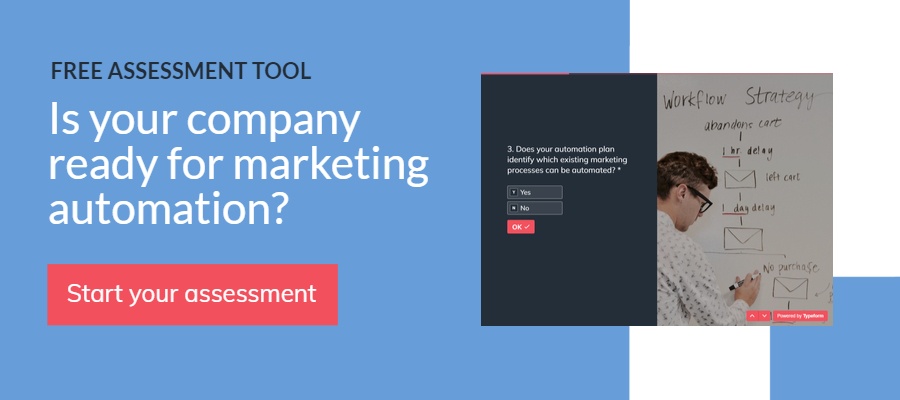Marketing automation is fast becoming a valuable marketing technology tool in B2B organisations, with more than half of companies already using it. But like anything in marketing, for marketing automation to be effective, it requires all the other aspects of your life science marketing machine to be functioning well. Underpinning this is having a clear overall marketing and communications strategy in place, including knowing who your target audience is and what they care about, making sure your value propositions are laser focussed on customer needs, and communicating the value you offer via credible, compelling messaging.
However, even with a robust life sciences marketing strategy in place, there are several common pitfalls that many marketing departments fall into when implementing automation technology. These can be a result of anything from not having deep enough insights into your customers, through to a misunderstanding of the technological aspects of automation.
Irrespective of the reason, falling into these traps can be costly and negates many of the benefits that marketing automation can bring to life science companies. In this blog post, we’ll cover some of the most common marketing automation pitfalls that life science companies face and discuss the steps you can take to avoid them.
Please note: Based on the above, throughout this blog we’ve assumed that you already have the fundamentals of your marketing and communications strategy in place. However, if building your life science marketing strategy is something you need support with, fear not, our team of marketing experts can help. Learn more about the strategy services we offer here.
The importance of an effective marketing automation plan
Before we delve deeper into automation pitfalls, it’s first essential to acknowledge the importance of having an effective marketing automation implementation plan in place. According to a survey by Three Deep Marketing, 58% of marketers felt they were having trouble finding success with marketing automation tools because they didn't have an effective plan in place to guide their automation efforts. Without planning clear goals and objectives, it’s far more likely that your approach to automation will fail.
Before you begin, it’s crucial to have a strong understanding of your existing manual processes as they are now, versus what you plan to do to automate them, as well as what you hope to achieve through automation (e.g. save time, reduce the impact of manual errors, etc.).
Based on your goals, you might also need to determine any new processes that are required, and if so, document them ahead of trying to automate them (in our experience, building the processes while automating them is possible, but this approach is usually more time consuming and prone to error).
Now that we’ve covered the importance of having an automation implementation plan, let’s continue to explore some of the other pitfalls that life science companies often fall into (and how you can avoid them).
Pitfall 1: Failing to integrate with other relevant tools or databases
All marketing automation tools rely on the data about your customers and contacts, which could be housed across a variety of databases within your organisation. For example, you may have an existing customer relationship management (CRM) system, website content management systems (CMS) and an email marketing system, all collecting information about your leads and customers and their interactions with your company.
Whilst some marketing automation systems are integrated by design (e.g. all-in-one marketing systems like HubSpot), if you don’t choose this route and your tools aren’t integrated, your marketing automation system won't be able to leverage valuable existing data to create personalised experiences. Multiple databases that don’t communicate with each other can also result in the duplication of contact records that are disconnected, meaning vital insights might be lost or ignored.
The good news is that there are a number of integration tools available to help you connect your data sources, such as Zapier, Automate.io and IFTTT (If This, Then That). You need to decide which of your existing platforms should be integrated and then choose an appropriate integration tool. This will help set the foundations for the successful use of marketing automation by ensuring data moves freely and accurately between your systems to drive your automated processes.
Pitfall 2: Using too many different tools
Another problem life science companies face when implementing marketing automation is that they often use too many different tools to achieve the results they want. The key here is that more is not necessarily better. For example, you might use a spreadsheet to draft social media posts, another tool to schedule the posts, and yet another to track performance and analyse results. This approach often wastes unnecessary time and can increase the chances of error.
One solution is to invest in an all-in-one marketing automation software that makes things easier and more efficient. By having all the tools in one software system, you don’t have to manually connect them, reducing the chances of error and making it easier to analyse data from across your marketing efforts. This is of particular benefit to life science organisations working on integrated marketing campaigns across a long or more complex lead nurturing and sales process. It also helps a great deal for companies that are generating lots of leads across a wide variety of different sources (with the automated tool keeping track of where each lead came from, what communications they have received, and which went on to become customers).
Another benefit of all-in-one solutions is that you can also easily access everything you need by logging into just one system. This can save you both time and effort.
All-in-one marketing automation tools can, however, come with a higher price tag (and if you are looking for a new tool, keep an eye out for the final part of our marketing automation blog series where we assess a variety of available tools across different price points). If you decide against an all-in-one approach, it’s a good idea to choose your automation tool based on what aspects of your marketing you’re looking to automate. Then, when planning your automation implementation, determine which (if any) of your existing tools and processes will still be required and which will become redundant.
Pitfall 3: Setting up automation and forgetting about it
Another big mistake life science companies make with marketing automation is building automated workflows and campaigns, and then leaving them to run in the background. Although automation tools save time by automating manual processes, it’s important to check in on the progress of your workflow to ensure they’re running optimally and catch any errors or unwanted outcomes along the way.
For example, you may set up an automated workflow that you’ve thoroughly tested, yet once it’s pushed live, something unexpected breaks and the workflow doesn’t work as intended. Alternatively, you could set up another automated workflow in the future, which unbeknownst to you, breaks something with automation you created in the past.
Over time, as you layer your automated workflows and rules on top of each other, some of your older workflows may also become redundant or there may be ways to simplify the workflows.
A general rule of thumb is to check in and optimise (if needed) your automated workflows every few weeks, or when you start to see some workflow red flags, such as no new leads entering your workflow. From a performance perspective, you may also want to check your existing workflows sooner than later to avoid risks such as sending outdated messages that aren’t resonating with your audience and are preventing your workflows from meeting your lead nurturing or customer acquisition goals.
Pitfall 4: Using the wrong performance metrics (or no metrics at all)
As we mentioned at the beginning of this blog post, creating a plan for implementing your automation system is crucial to success. Not only is it important to know what your goals and objectives are, but you also need to determine metrics that let you know if you’re on the right track or not. Without the right documented performance metrics or worse, with no determined metrics at all, it’s much more difficult to determine the success of implementing automation, and whether or not you have met your intended goals.
For example, if one of your automation goals is to save time with automation, how will you measure whether time has been saved? In this case, you could document how much time your existing manual processes take you and then plan to compare this with how much “human time” the automated version of this process takes.
Another example might revolve around leveraging automation to enable more effective lead nurturing at scale. For this goal, you might want to still track the change in human input/time required after you implement automation, but other relevant metrics might include email open rate, email click rate, and the number/percentage of leads that go on to become MQLs (marketing qualified leads), SQLs (sales qualified leads) and customers.
Once you’ve determined the right metrics to measure before and after implementation to determine success, you should continue to track these metrics and make tweaks to increase performance over time.
Pitfall 5: Spamming your audience with irrelevant content
Another key advantage of using automation to save time is by automatically generating email newsletters, promotional emails, social posts and more. In theory, this means you could generate large volumes of content to share with your audience with little effort.
Unfortunately, this also means that automation systems can make it easy to go overboard and spam prospects with too much content that isn’t relevant. For example, using a disjointed social media strategy that overloads followers’ timelines with content that's not useful and engaging can lead to a decrease in follower numbers.
Likewise, spamming email inboxes with irrelevant content results in higher unsubscribe rates, or worse, could see users start to flag your emails as spam, hurting your domain authority (and the deliverability of future emails you send out). According to TechnologyAdvice survey, 45.8% of subscribers will flag emails as spam if they receive them too often from a single provider.
However, there are several ways to manage this risk. For example, we recommend that you create buyer personas for your business and then segment your audiences based on these before implementing marketing automation. This will help ensure you are sending the right content to the right people, rather than sending all of your content to everyone, all of the time.
It's also important to remember that quality trumps quantity, so it's best to create a lower volume of emails or social posts of higher quality content, as this will likely lead to better engagement and less chance of annoying your audience by contacting them too frequently with poor quality information.
Pitfall 6: Failing to use automation to drive performance changes
One of the most beneficial components of marketing automation is the ability for companies to learn about their audience and predict whether or not a campaign will succeed. Automation makes it easy for companies to run ongoing A/B or split testing to maximise the results of their marketing campaigns.
For example, you can A/B test different elements of a campaign, such as the subject line of an email, the call to action, or the graphics used. This not only enables you to optimise campaign performance, but can also provide valuable insights into what your target audience prefers and what types of messages are likely to get the best results.
When it comes to A/B testing your emails, small changes can make big differences. Automation makes it easy for you to use A/B testing on every campaign and at every stage of your marketing process. Over time, the incremental improvements across your automated marketing activity will likely generate a significant improvement in performance.
Are you ready to implement marketing automation?
If used correctly, marketing automation systems can play a powerful role in saving life science marketers time and money by automating previously repetitive tasks. However, the decision to implement marketing automation should not be made lightly and a clear plan for automation implementation should be established.
To help life science organisations plan for the successful implementation of marketing automation, we’ve put together a 10-step marketing automation ‘readiness’ tool. Simply fill in the short questionnaire for advice and recommendations on how to ensure your marketing automation project is as smooth and successful as possible.




